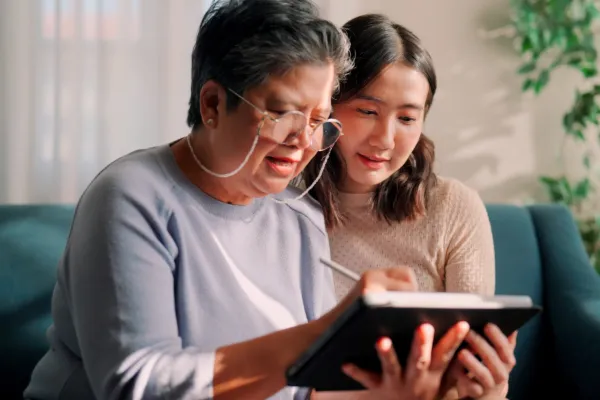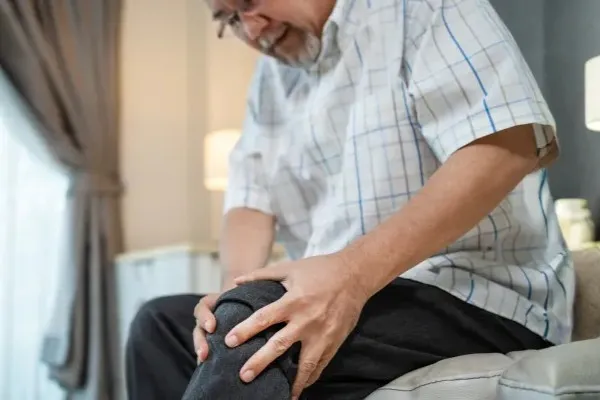Topics
What Are Period Cramps?
Period cramps, also called dysmenorrhea, are common menstrual symptoms experienced by many women during their menstrual period. Period cramps are extremely common, but they occasionally affect a woman's day-to-day life. They can be painful and, for some, even debilitating. The pain often feels like throbbing, sharp, or spasms in the lower abdomen and may spread to your lower back and legs. Some women also experience nausea, headaches, diarrhea, or back discomfort during their periods. These cramps happen due to uterine contractions as your body sheds the lining during the menstrual cycle.
Pain levels vary, and some women may have better tolerance towards it compared to others. Additionally, the intensity of the cramps could vary with each period as oestrogen and progesterone hormone levels fluctuate.
Types of Dysmenorrhoea (Painful Period)
Primary and secondary dysmenorrhea are the two forms of painful periods.
- Primary dysmenorrhea: This is menstrual pain without any specific underlying health issues. The discomfort typically starts with the onset of your menstrual period, possibly starting a few days before.
- Secondary dysmenorrhea: Menstrual pain triggered by an underlying health condition. Some women may encounter more intense menstrual pain after years of experiencing what is considered "normal" period discomfort.
Common Causes of Secondary Dysmenorrhea
- Endometriosis: Tissue resembling the womb’s lining grows in other areas, such as in the ovaries and fallopian tubes.
- Uterine fibroids: Non-cancerous growths that develop in or around the uterus can cause painful and heavy periods.
- Pelvic inflammatory disease (PID): Bacterial infection in the womb, fallopian tubes, and ovaries.
- Adenomyosis: Period cramps are especially painful as the endometrial tissue in the uterus lining grows into the muscle wall of the uterus.
How to Relieve Period Cramps
To relieve period cramps, try a combination of over-the-counter pain relievers, such as ibuprofen or naproxen, applying heat to your lower abdomen, and getting enough sleep. Gentle exercises, such as yoga, walking, or cycling, can also be beneficial, as can relaxation techniques like deep breathing or meditation.
6 Effective Ways to Relieve Period Cramps
If your cramps are mild to moderate, you can try these methods for relief:
- Pain relief medication: Various over-the-counter pain relief medications can be taken to manage period cramps. Nonsteroidal anti-inflammatory drugs (NSAIDs) are the most effective for period cramps because they target prostaglandins. This, in return, makes menstrual cramps less severe. NSAIDs such as naproxen and mefenamic acid are most effective when taken at the onset of your period or at the first signs of pain. Typically, these medications are taken for a short duration, usually 1 or 2 days, to provide relief from menstrual discomfort.
- Hormonal birth control: For women not desiring pregnancy, contraceptive pills and other hormonal birth control methods can also serve as treatments for dysmenorrhea.
- Get enough rest: Ensuring an adequate amount of sleep before and during your menstrual period is crucial. Sufficient rest can help you manage discomfort and improve your ability to cope with the pain.
- Exercise and yoga: Yoga is a beneficial exercise that can ease menstrual cramps, improve flexibility, and strengthen abdominal muscles. Even mild physical activity, such as walking, can boost overall health and enhance mood.
- Use heat therapy: Applying a heated pad to your lower abdomen may help alleviate cramps by relaxing the muscles causing them.
- Manage stress: Reducing stress levels is essential for obtaining relief from period cramps. You can practice yoga, engage in deep breathing techniques, meditate, or try any other method that helps you reduce stress.
The treatment for secondary dysmenorrhea varies depending on the underlying cause. Your doctor will provide guidance on the most suitable course of treatment, tailored to your specific symptoms and condition.
Book Your Appointment for Period Cramps Relief at Gleneagles Hospitals
If you find yourself dealing with severe period pain that hinders your daily activities or causes concern, it is advisable to consult with your doctor. Get in touch with us to find out more about our Obstetrics & Gynaecology Services at Gleneagles Hospitals near you.








